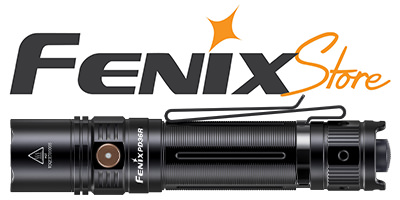That is not entirely true. Conformal coating seals all components and solder joints and holds them in place during shock and vibration helping to prevent damage. If the MCPCB is not securely held down potting definitely adds an extra layer of protection but, as long as it is, potting only adds a little more protection over conformal coating when it comes to shock and vibration due to its often increased thickness. It should be noted that Potting has some downsides as well like increased weight, increased production costs, and if an epoxy based product is used it completely prevents any modifications, maintenance, or repairs down the line. Epoxy based potting can also cause added stress on electrical components during heat cycling(this can be somewhat mitigated by using a silicone based product however). A thermally conductive potting compound does add the benefit of increasing thermal efficiency by allowing more heat from the MCPCB to transfer to the body then the single layer of thermal paste often used on conformal coated MCPCBs though.
While I am not arguing that HDS lights are a step up in build quality and durability over Surefire and are definitely a more honorable company imo, I think it is important to note that Surefire lights have been battle proven for over 30 years and shown to be plenty tough. They were also being made and bolted on LEO's, Government Agent's, and Military personnel's firearms before HDS, Ra, and Novatac even existed. Many of the designs and innovations in the handheld and WML industries were invented by them and they still make some great lights.
Please don't take this post as being directed at you Tachead, it is not. I do want to clarify some things, and in my usual manner, go way off topic and even rant a bit. It's a Hogo thing.
So…
Which is why a thermally conductive potting compound is used in HDS lights. Durability and reliability are of most importance. The increased weight is negligible, and not really a factor on something like this unless one is counting grams. No maintenance needs to be done. Modifications should not be done, and repairs are unnecessary. If the light should ever fail, it is replaced. Increased production cost, yes. Most definitely, but for HDS customers, good enough isn't good enough.
I won't even go into the honorable part. OK. I'll touch on it. Oh CRAP! Now I'm off... SF (from now on will be referred to as CUE "Creepy Uncle Ernie" has a patent where they stole Henry's artwork and didn't even bother to change it. The original artwork can be found online with the date published by HDS/Henry, and the patent with Mathews and Kim's name can also be found with a later date… with the exact same artwork. Another reason CUE has never sued HDS and an insider in the company once confessed that at their Monday morning meetings, they would sit around and try to figure out a way to sue Henry out of business (which they never could because as much as they like to give the perception that they innovate, they don't… not after LEDs took over as a light source in flashlights.) Like I posted once before, I know more than I care to about the flashlight industry. Another little tidbit, their Titan… they lost money every time one went out the door. They lost a lot of money every time one shipped. Bit of a sore spot for them and I love to rub it in any chance I get. That light was a disaster for CUE. A well-deserved disaster.
Surefire did good things way back in the day with incan lights. I'm not disputing that. However, that is what their reputation was built on. I liken them to Ursala Andress, quite hot during the day… but my god man! Look at her now! She could frighten small children and dogs. I was a CUE fan back in the day. I had the original 6P, then 9P, then most of the lights that came after… but when LED's took over… CUE lagged way behind. It was losing an Aviator that got me off pocket clips and into making my own holsters. Why CUE… to me, they are like a relative you think is just the nicest guy… only to find out later they are a pedophile. It's an analogy, and one that I think fits.
As far as your time line, actually, Henry was producing and selling lights before Surefire started. Incandescent, dual illuminated headlamps for caving in 1979. I don't mean just making them for himself, I mean production runs of lights for cavers in 1979. Most only know about the LED lights, starting with the Action Light of 1999 and many don't even know about that.
"Many of the designs and innovations in the handheld and WML industries were invented by them…" Weapon mounted lights, yes. Handheld, absolutely not. .As far as innovation, CUE is way behind and has used the "copy, steal, and sue" business model. Most who know the inner workings of the company, hate them… including their firearms instructors of which I have met a few. They game the FL1 ANSI standard (you can find this on the Elzetta blog where they tested SF lights). If you want a top of the line super bright "tactical" light, Elzetta is the light. CUE will advertise 1300 lumens for four hours, but what they don't tell you is that after brightness is measured 30 seconds after being turned on (the FL1 standard for testing max) the light ramps way down after a couple minutes then continues at a much lower setting (still above 10% of max) giving the user the idea that it is 1300, or whatever, for an extended period of time. While still following the FL1 standard, it is deceiving.
The FL1 standard was first proposed by Brad Penny (president of Streamlight) at SHOT Show in 2003. HDS wrote a paper proposing what to use from 2003-2005 and sent it out. The National Electrical Manufacturers Association (NEMA) which was/is a committee consisting of a bunch of flashlight manufacturers proposed the FL1 standard to ANSI. Guess who wasn't invited. Guess why. Guess who is gaming the FL1 standard, which was created in 2009 because of the rampant bogus light output claims, but now is gamed for runtime claims by the very manufacturers who created it.
You see, HDS has "burst" mode, which clearly states what the light is doing, and it can be disabled if one desires. What the other companies are not saying is that they also have "burst" mode… but don't bother telling you, and you can not disable it if you so desire to not fry your emitter.
The Sopwith Camel was battle proven but I don't think the Lt. Colonel I know who fly's A-10s would want to take one in battle anymore. I've known too many in the military and working as LEOs who have had their CUE light fail, including myself. They made a good light once but failed to keep up.
It brings me to another point which is just because the military is using it, doesn't mean it is any good. Ask any Marine about his issued gear. Most vets don't have the same affinity for the term "milspec" as civilians seem to have for the word. Military specification.Heck , my first issued M-16 in boot was… "nonfunctional". After getting a good reaming from my DI for not having it taken apart… I informed him it was inoperative, at which point I was cussed out some more, the rifle snatched from my hands and inspected, then I was ordered to go get issued another service rifle because mine was "nonfunctional". Battle proven is really just a marketing phrase for those who have never been in battle.
What Creepy Uncle Ernie does have is exceptional marketing, a team of good lawyers, and a fan base that rivals that of the .45 ACP guys over 9mm debate. Almost a religious following.
Here is the list of HDS innovations from 1998, all of which came out BEFORE any other flashlight company.
Regulated output of 15 lumens - 1998
Synchronous rectification for improved efficiency - 1998
Multiple discrete brightnesses - 1998
Multilevel rotary dimmer control - 1998
Automatic brightness step reduction for dying battery - 1998
Extended emergency lighting - 1998
Visually even (logarithmic) brightness spacing - 1998
Intrinsically safe design and explosion-proof construction - 1998
Military type III hard anodize finish - 1998
Regulated output of 20 lumens - 1999
Tint control for lower brightnesses - 1999
Microprocessor-controlled constant current brightness control - 1999
Reverse battery protection without diode power penalty - 1999
Thermal regulation and management - 1999
Microprocessor-controlled constant power brightness control - 2000
Microprocessor-controlled multiphase buck/boost topology - 2001
Microprocessor-controlled simplified buck/boost topology - 2002
Protection for rechargeable batteries - 2002
Innovative multi-brightness single-button user interface - 2003
Programmable brightness settings - 2003
Calibrated brightness - 2003
Intelligent pocket light of 30 lumens - 2003
Automatic switch lockout and automatic shut-off - 2004
World's smallest tactical LED flashlight of 60 lumens - 2004
World's smallest tactical LED flashlight of 85 lumens - 2005
Disorienting strobe, emergency strobe and SOS assignable to presets - 2006
World's smallest tactical LED flashlight of 120 lumens - 2007
1500:1 dynamic range (0.08 to 120 lumens) - 2007
3-stage twisty switch - 2007
100 lumens for 1 hour on a single CR123A battery - 2007
Fully automatic detection and protection of Li-ion batteries - 2007
Dual red/white output using single emitter - 2007
10,000g impact tolerance - 2008
120 lumens for 1 hour on a single CR123A battery - 2008
2125:1 dynamic range (0.08 to 170 lumens) - 2008
Automatic burst mode for extended runtimes on maximum - 2008
140 lumens for 1 hour on a single CR123A battery - 2009
World's smallest tactical LED flashlight of 200 lumens - 2009
2500:1 dynamic range (0.08 to 200 lumens) - 2009
Networked multi-processor controller supporting advanced UIs - 2010
Customizable rotary dimmer control system - 2010
2 hours runtime on High before dropping below 50% - 2011
World's smallest tactical LED flashlight of 250 lumens - 2014
12,500:1 dynamic range (0.02 to 250 lumens) - 2014
Advanced tactical interface with rotary brightness control - 2014
World's smallest tactical LED flashlight of 325 lumens - 2015
16,250:1 dynamic range (0.02 to 325 lumens) - 2015
High color rendering index of 93 typical at 200 lumens - 2015

